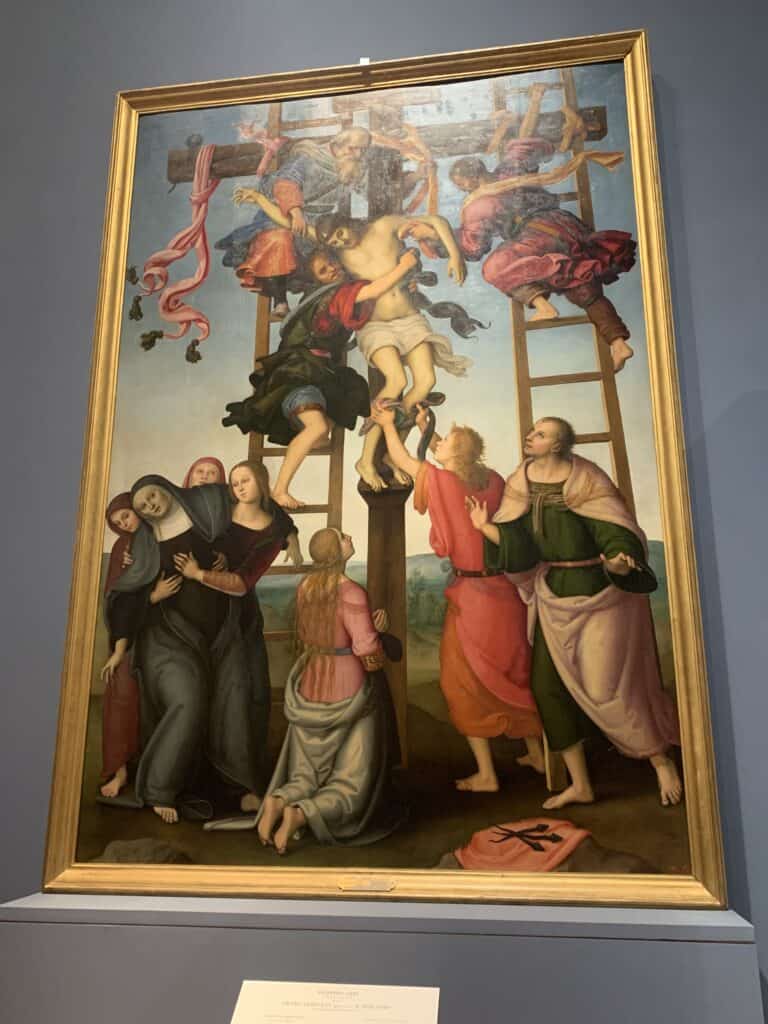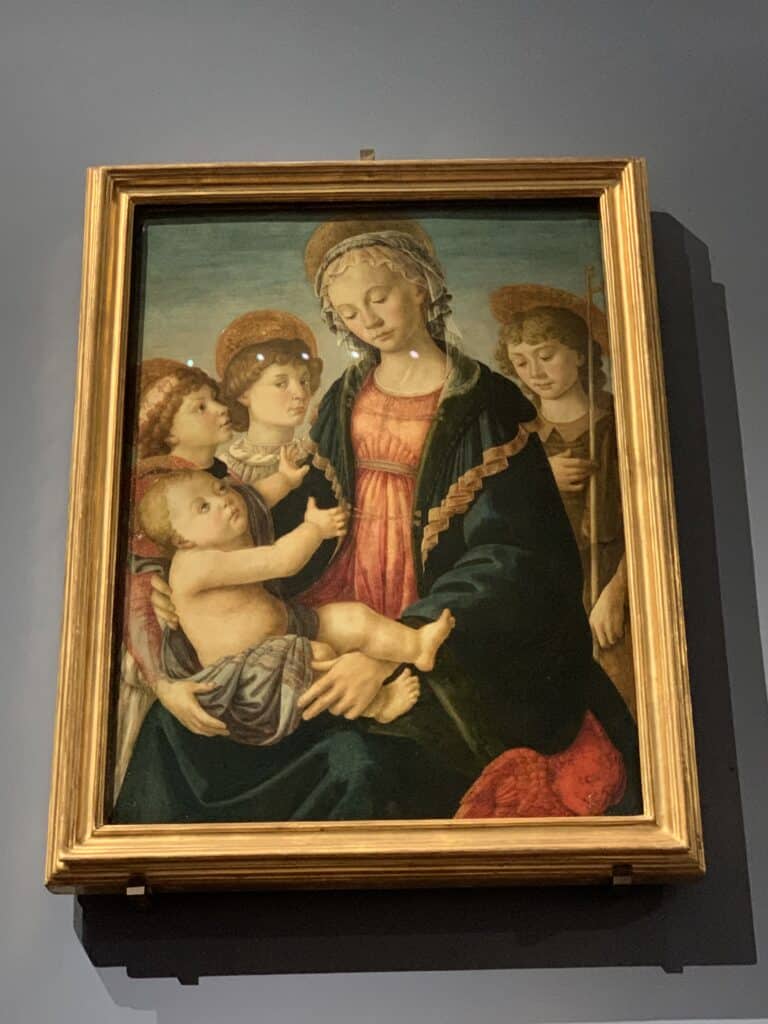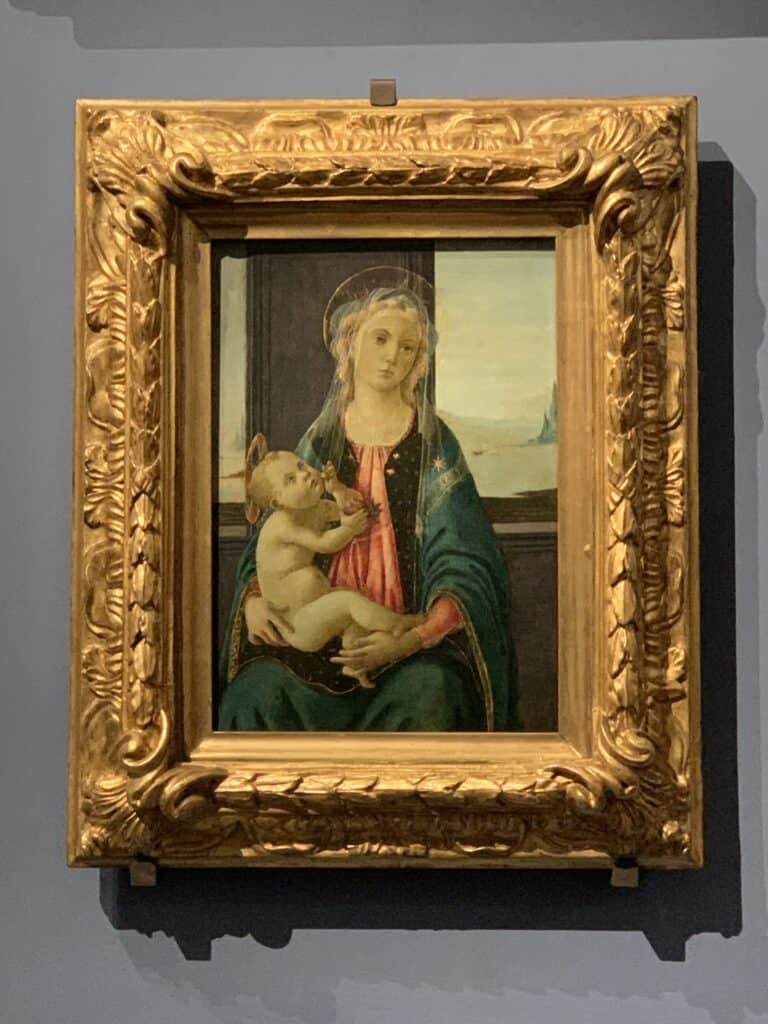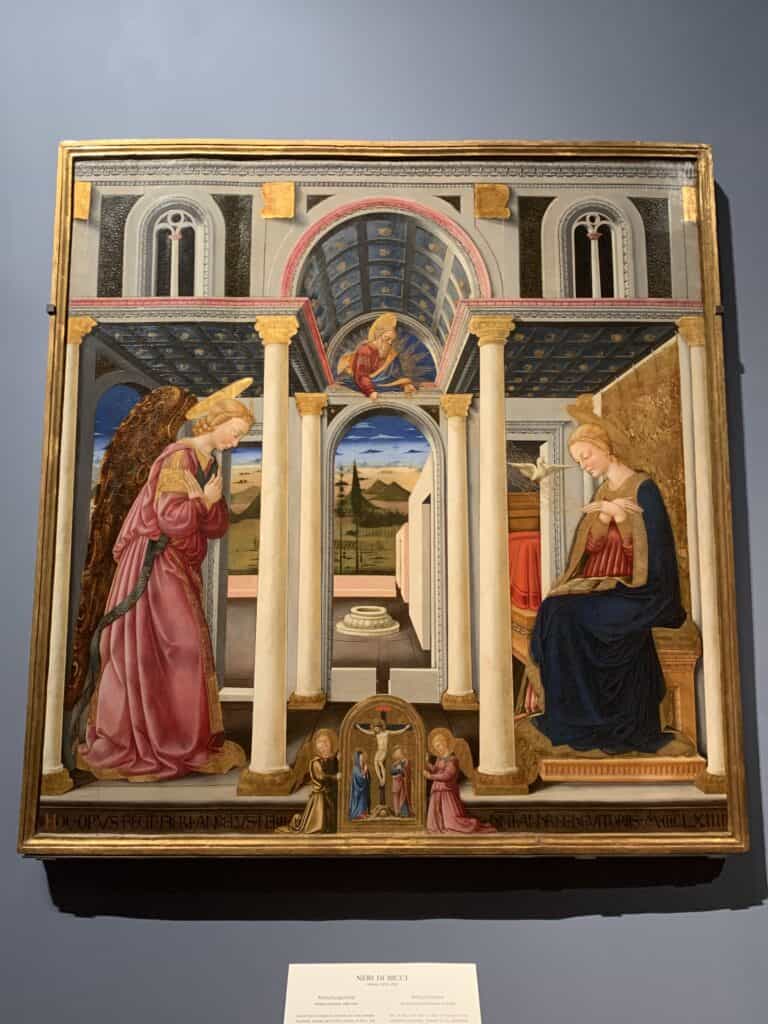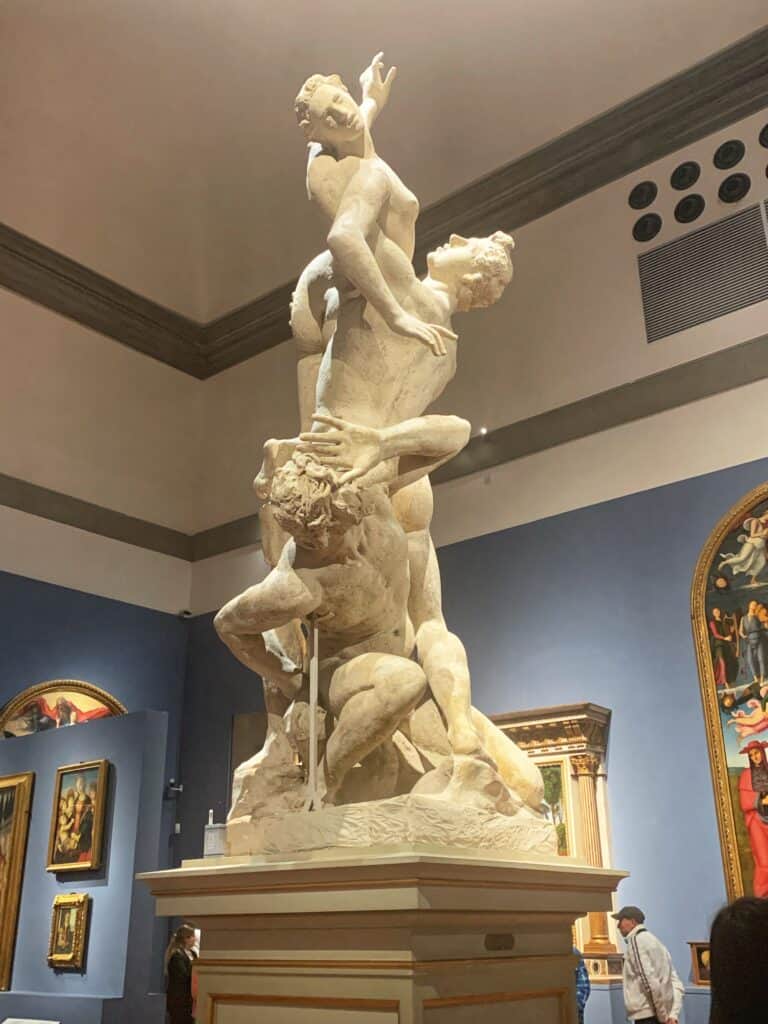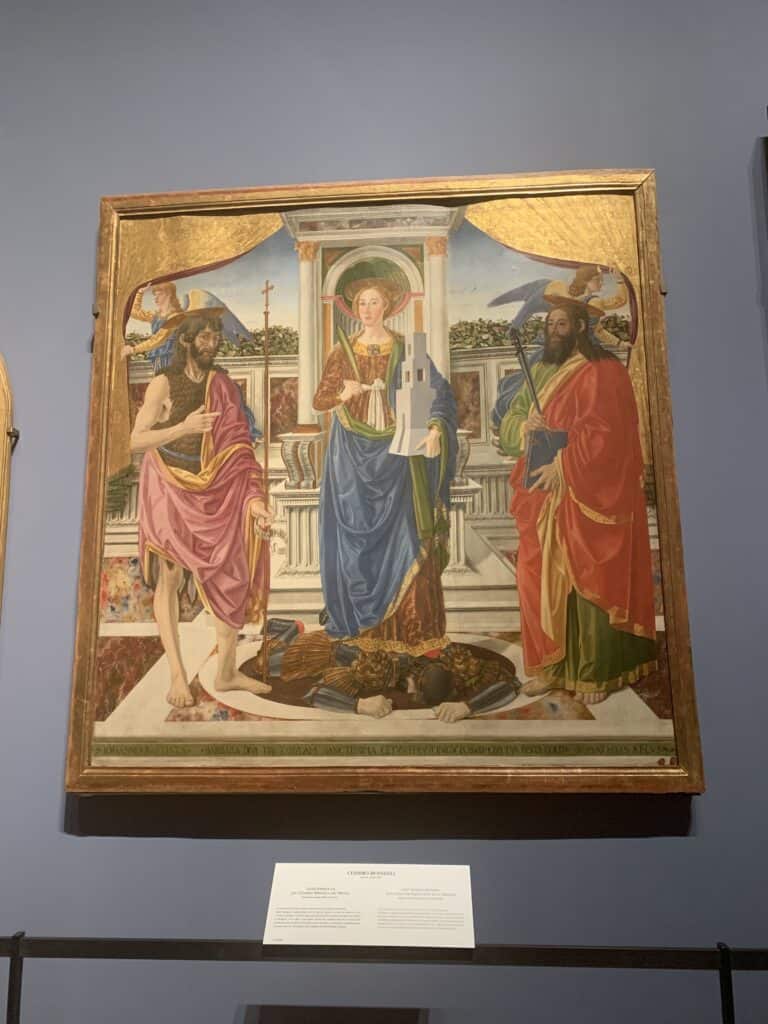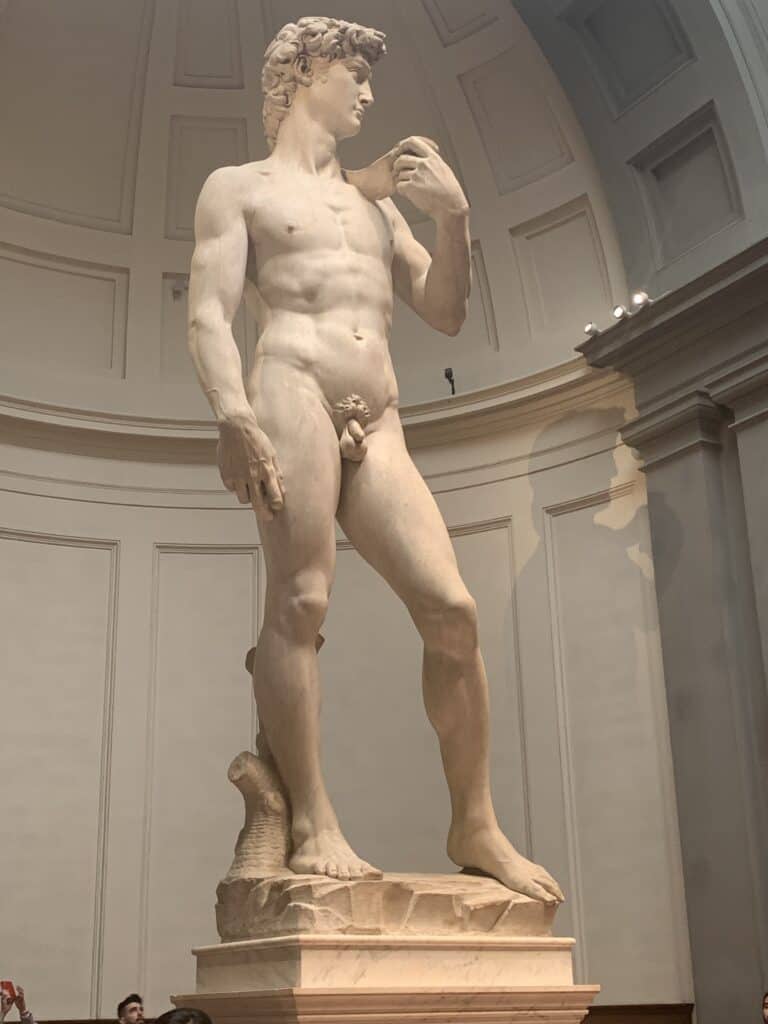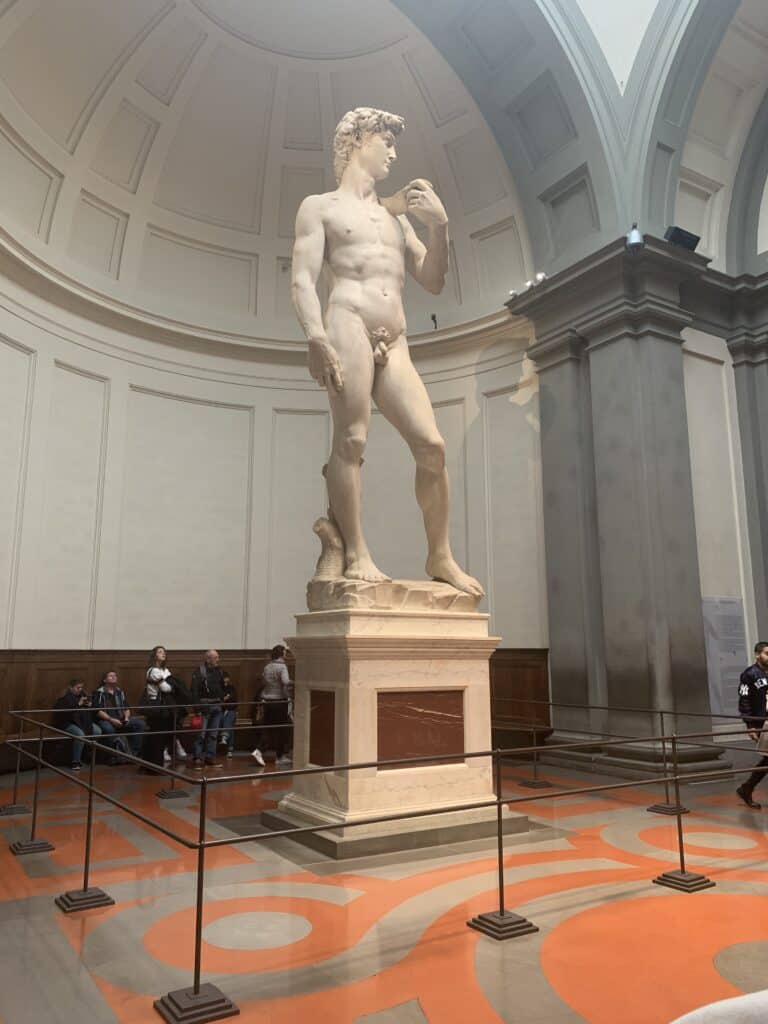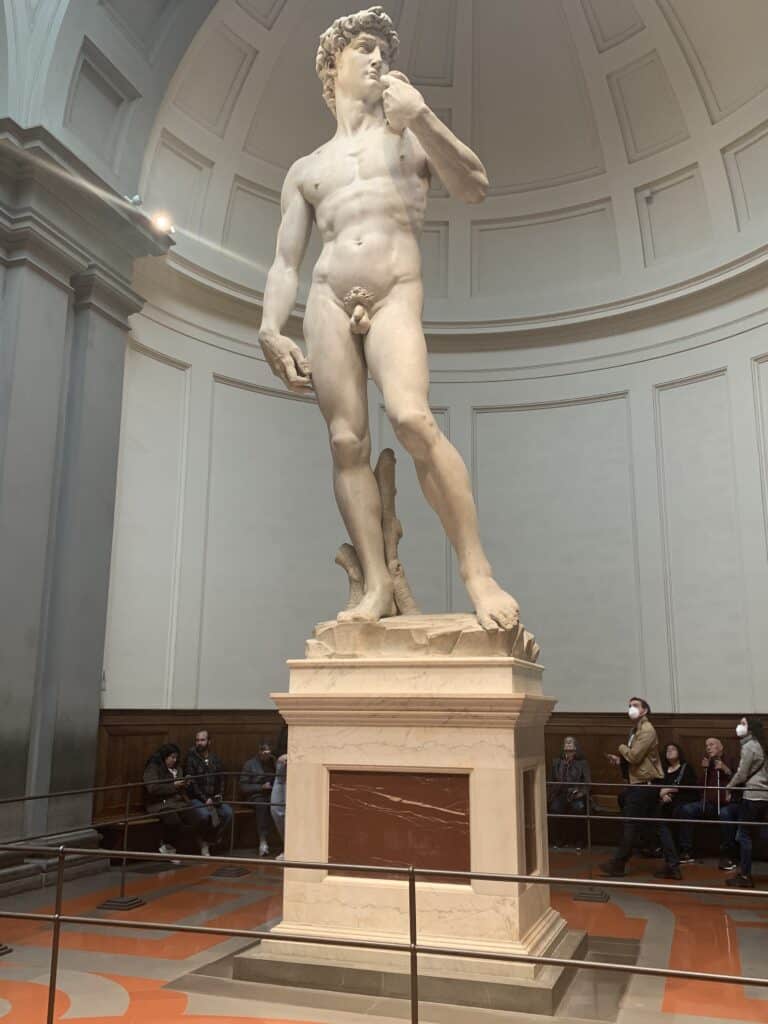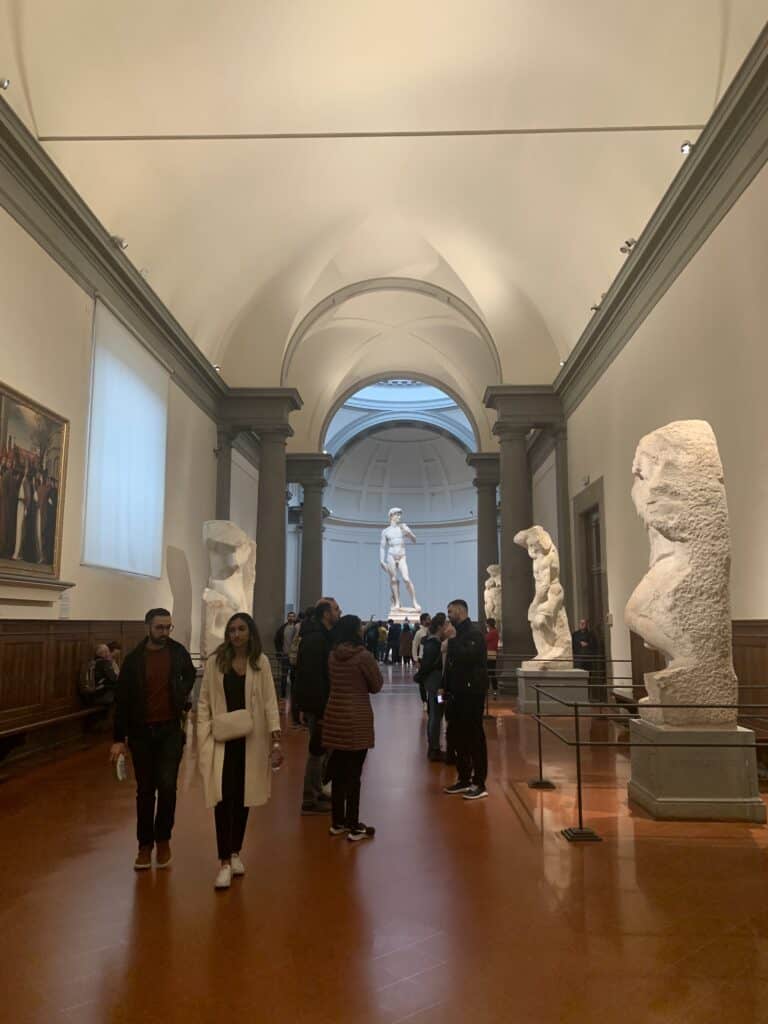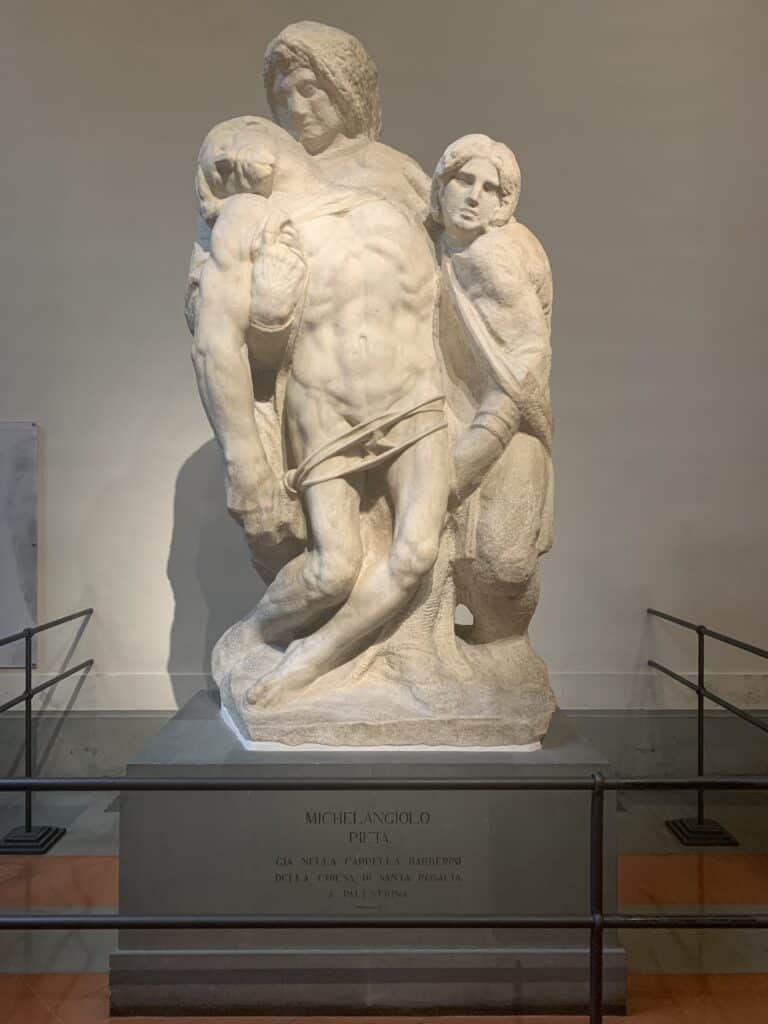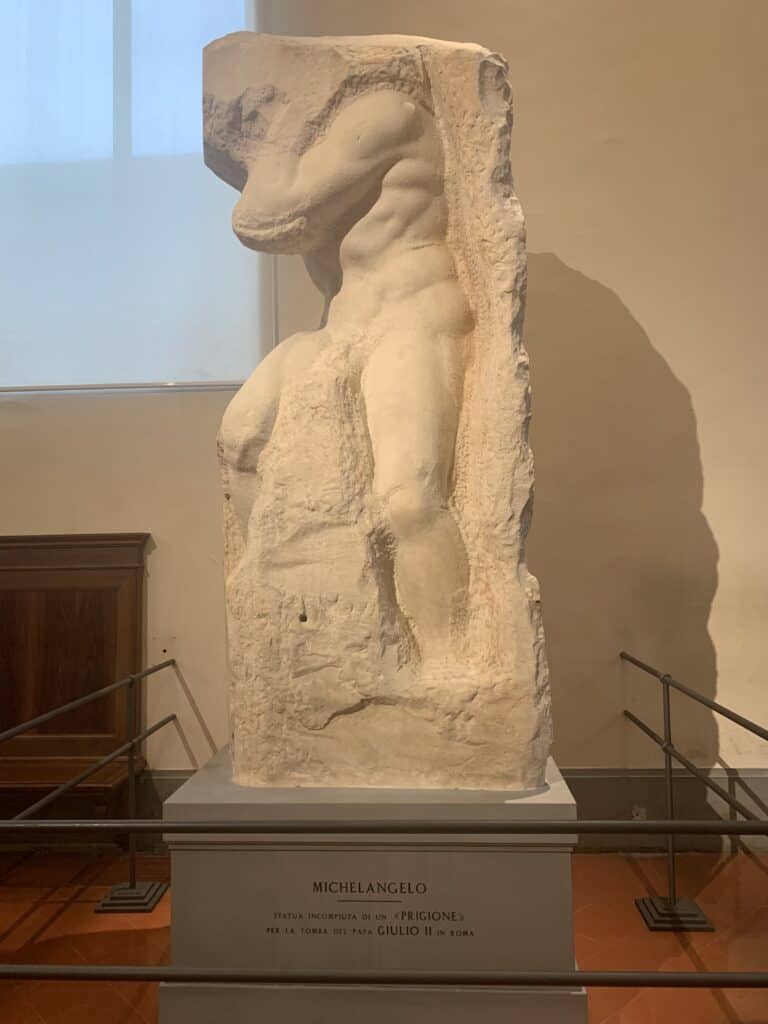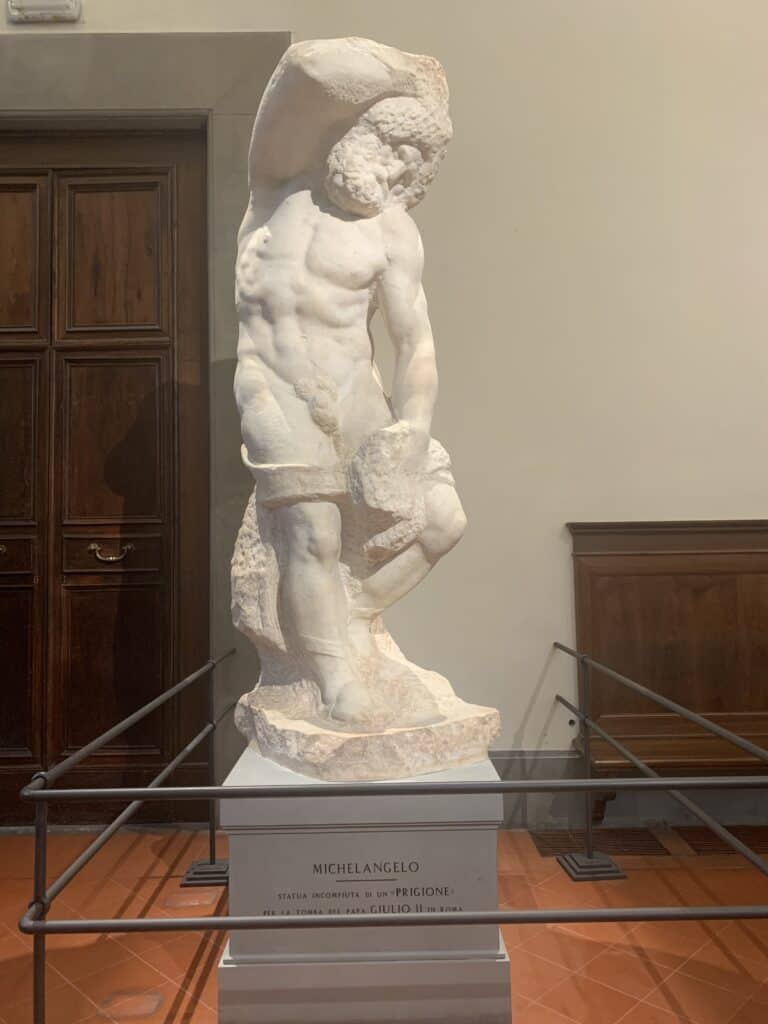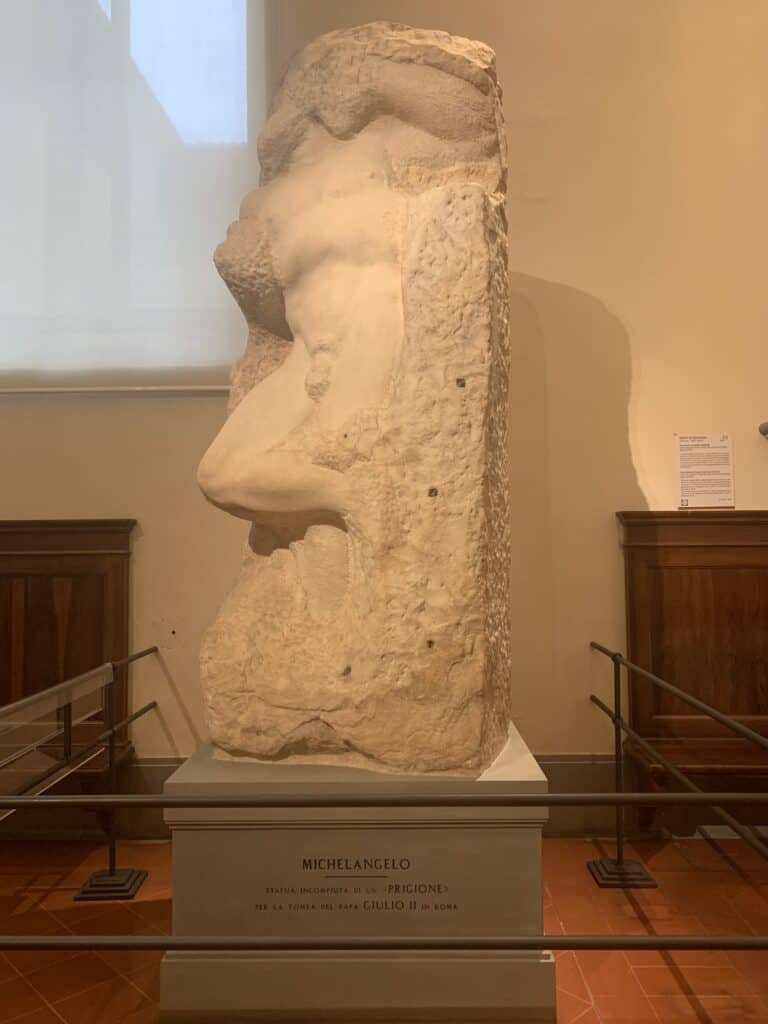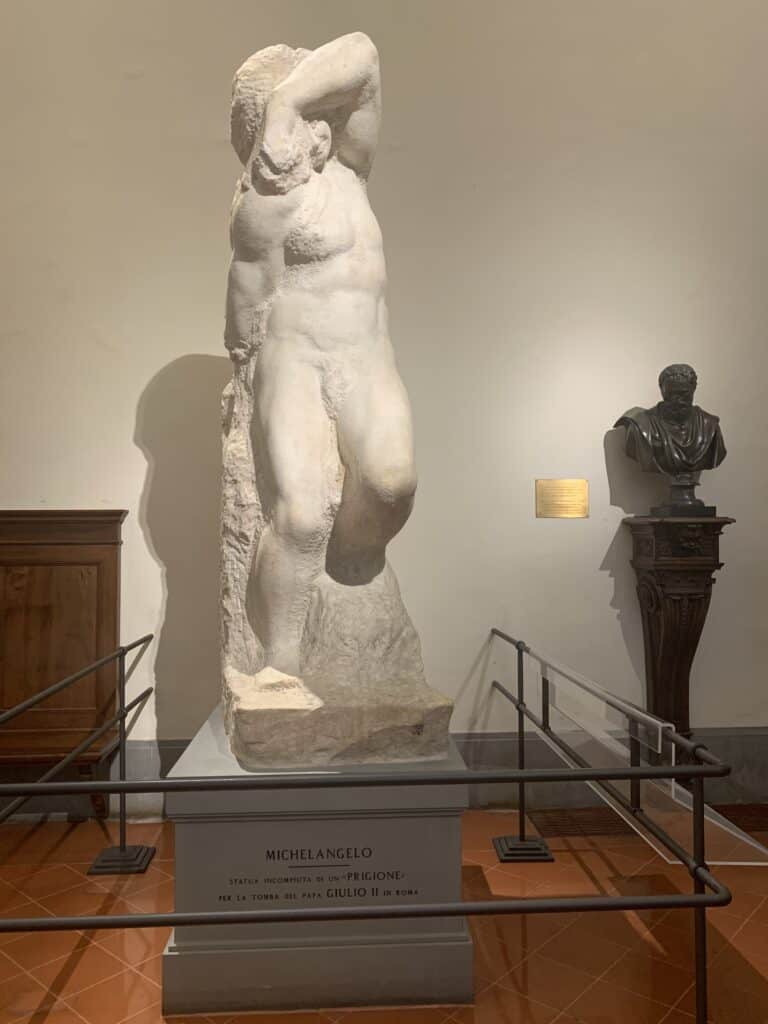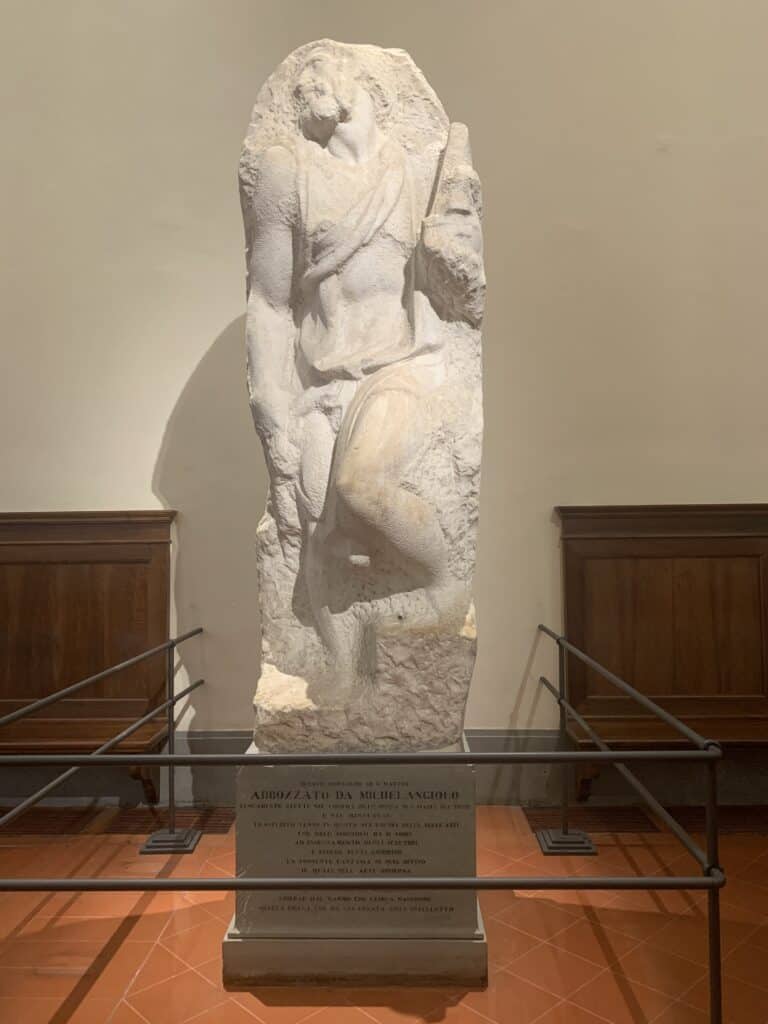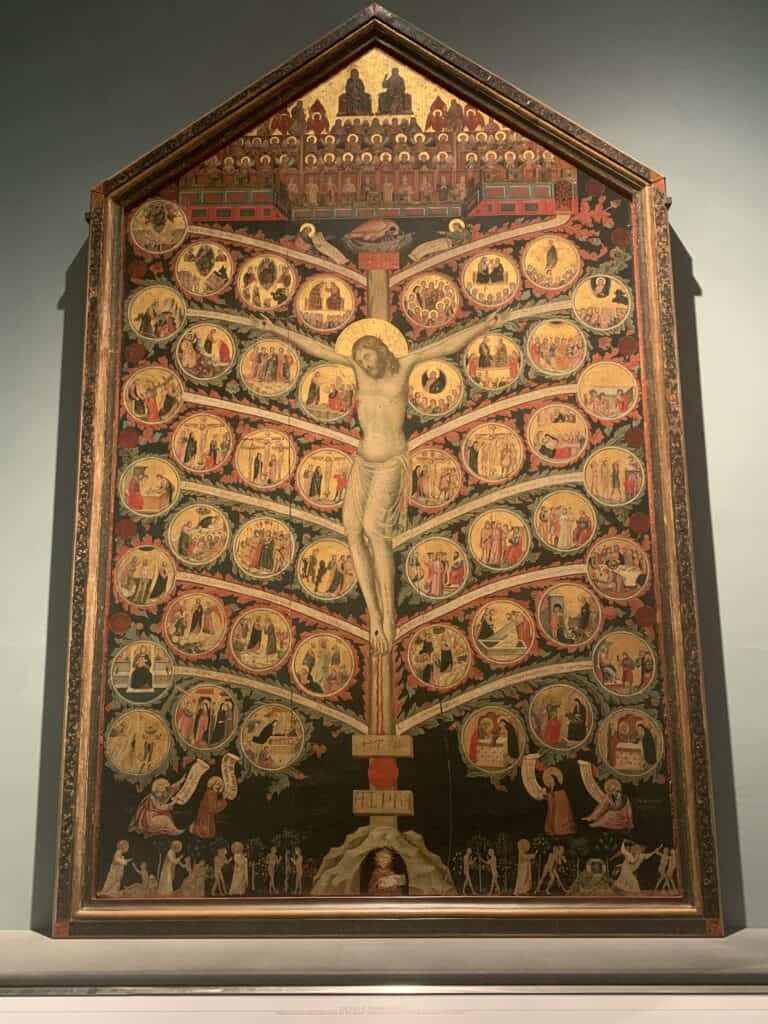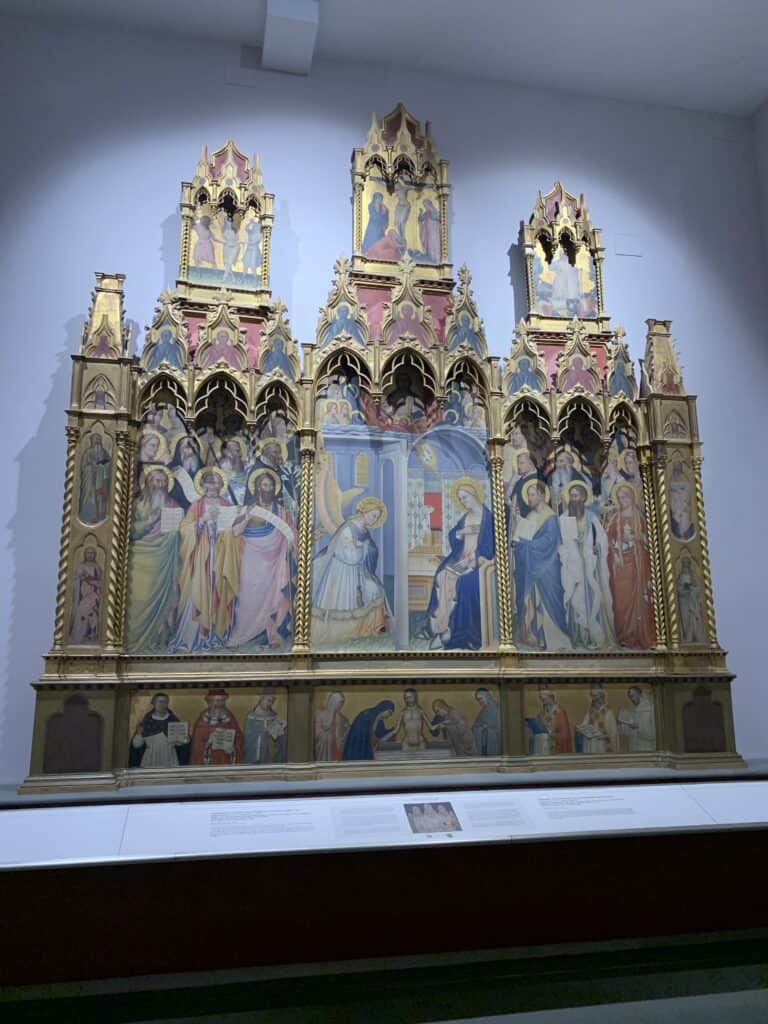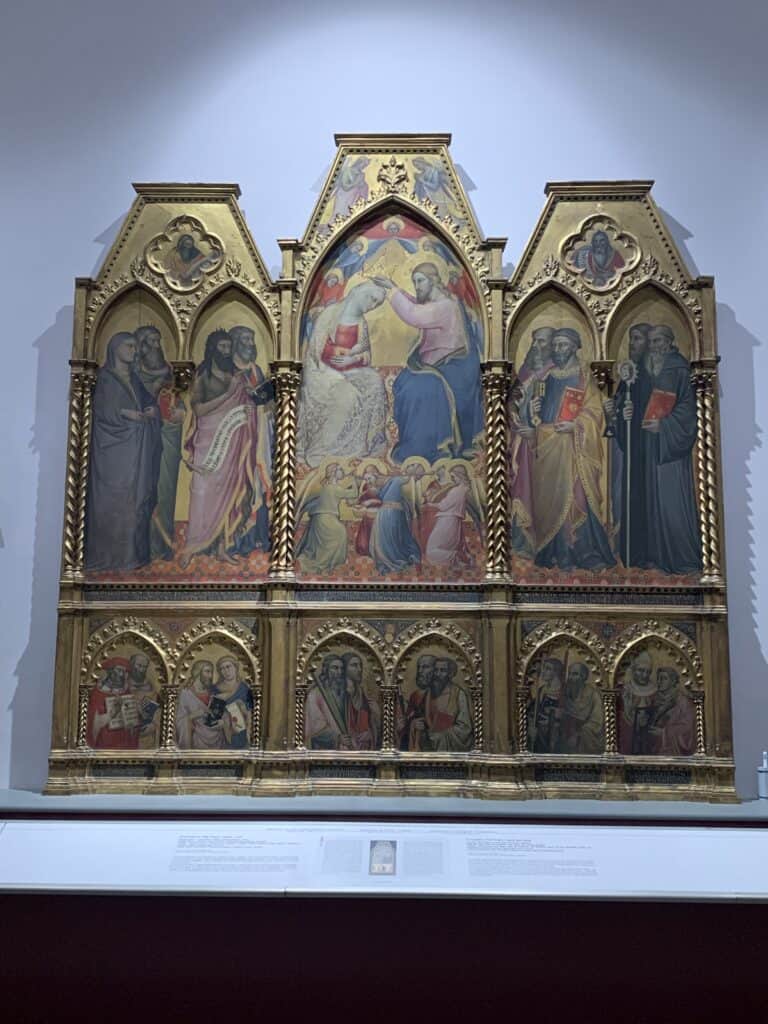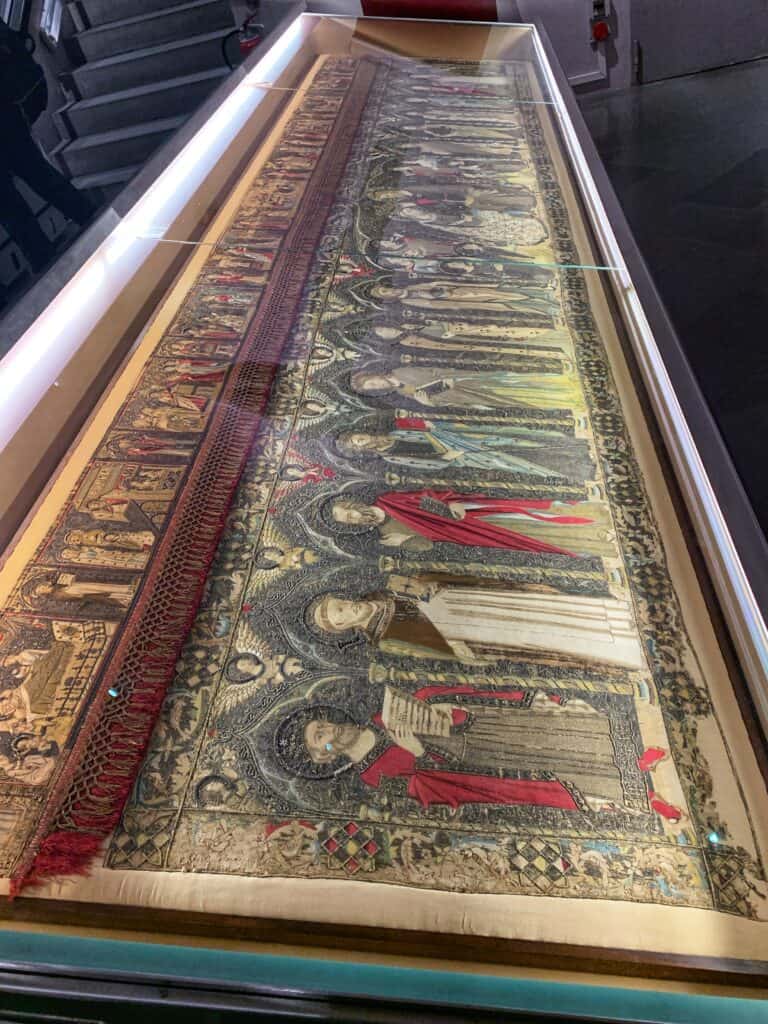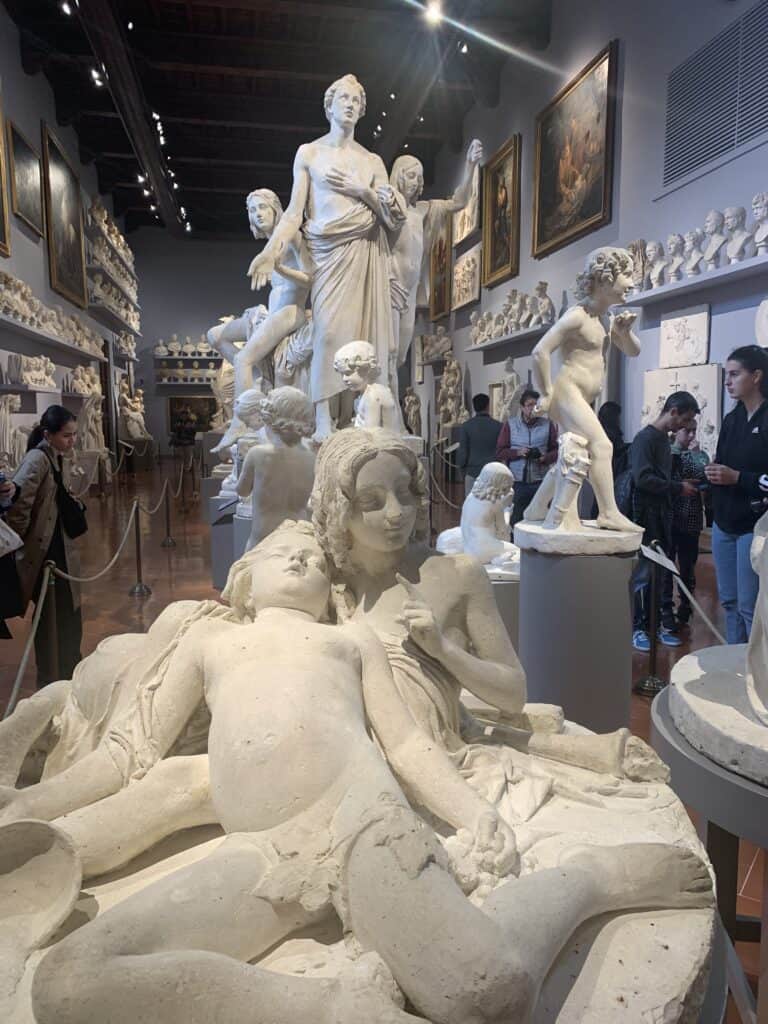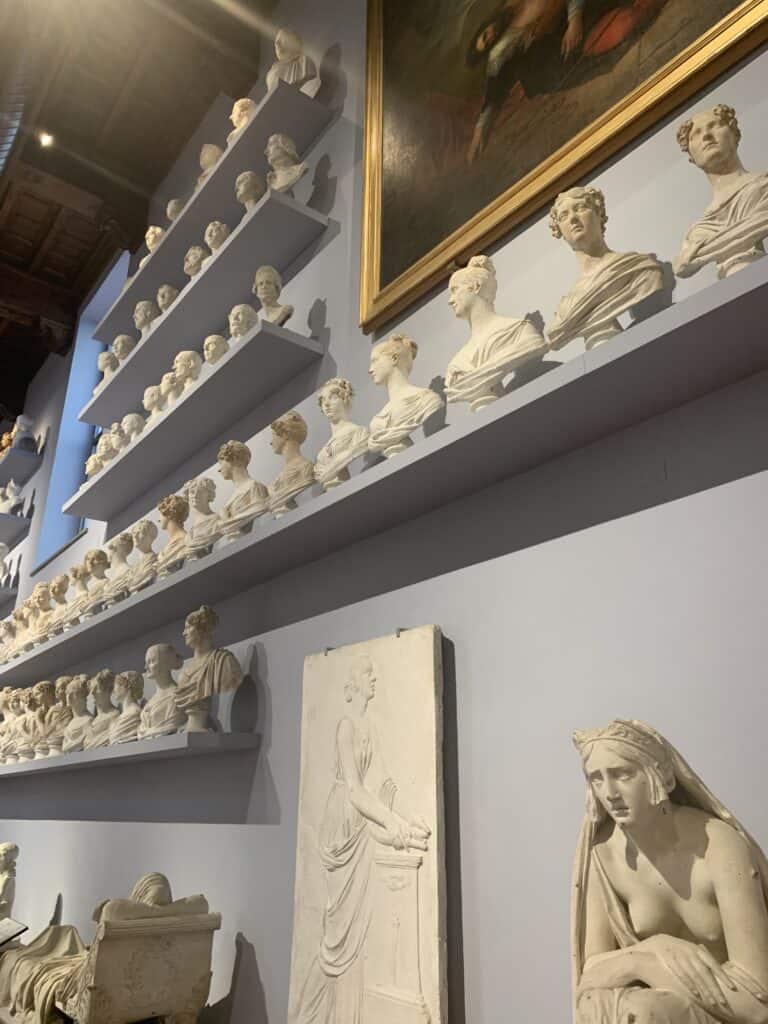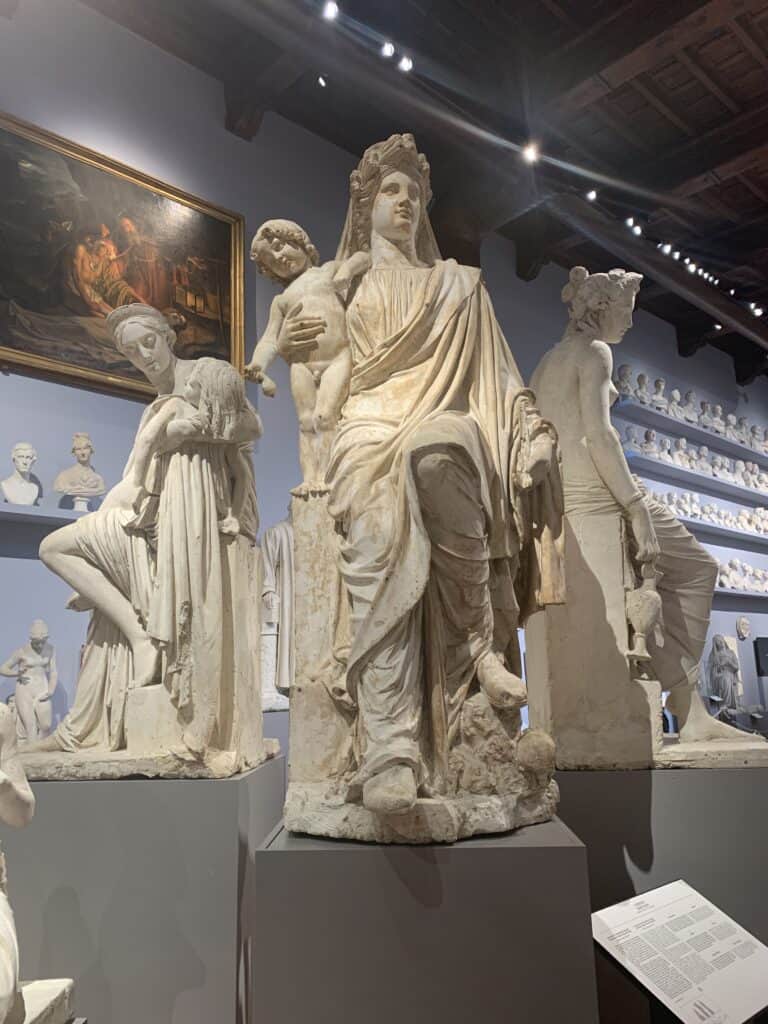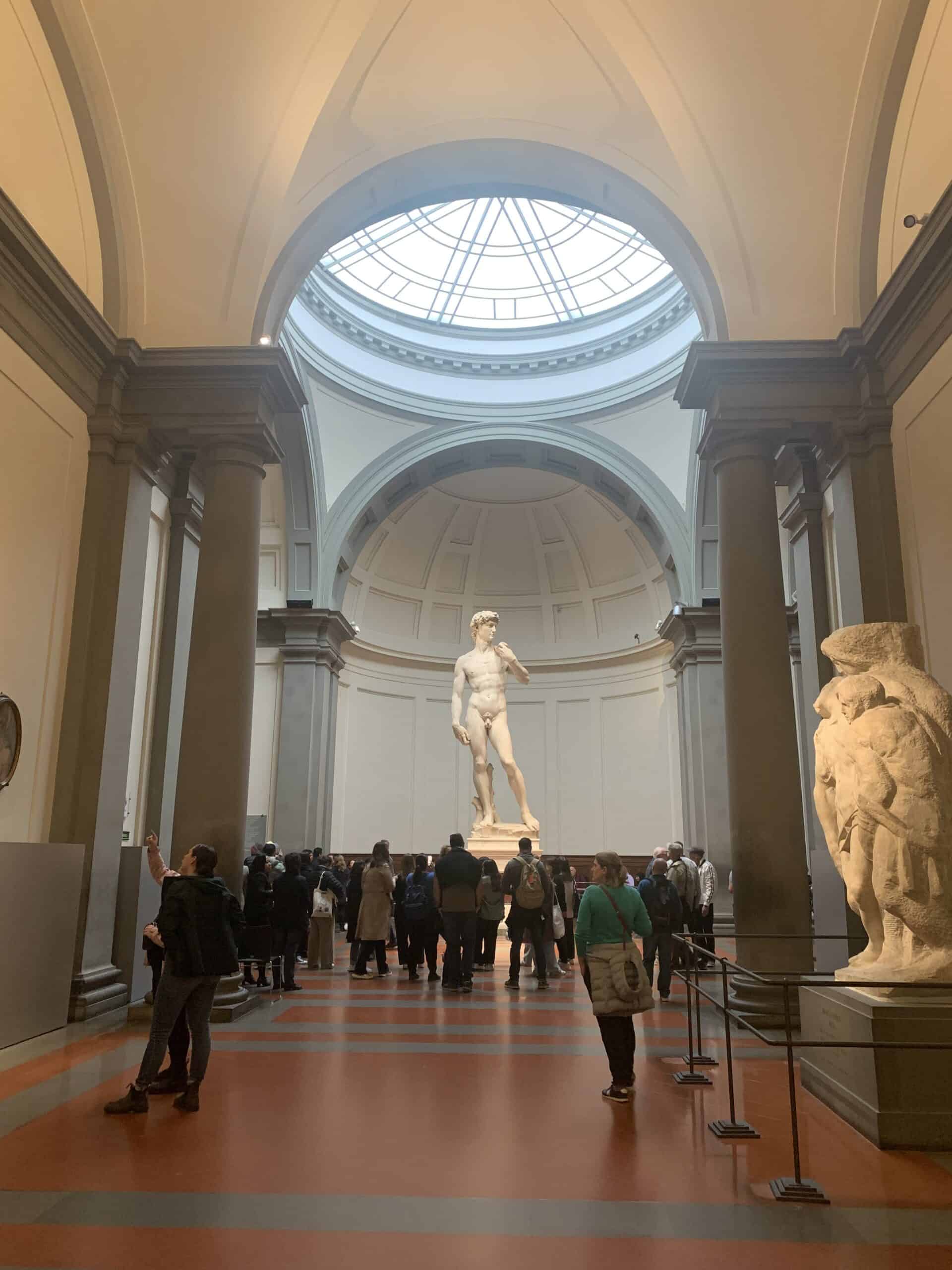
In 1784 the Grand Duke Pietro Leopoldo wanted to build a gallery in Florence to accommodate great examples of Florentine art.
The birth of this gallery is given above all to the proximity of the Academy of Fine Arts from where it takes its name.
Today it houses sculptures by the Florentine genius, sculptures by other artists and paintings from the fourteenth to the sixteenth century.
The Accademia Gallery is known worldwide above all for Michelangelo’s David.
Michelangelo worked on the David from 1502 to 1504, using a block of marble that had previously been used.
The statue portrays the biblical hero at the moment when he is about to face the giant Goliath. Michelangelo’s David is considered one of the most important works of the Renaissance.
Brought here in 1873 after being placed for centuries in Piazza della Signoria in front of Palazzo Vecchio. The exposure to wind, cold and rain but also vandalism and riots were irreparably damaging the statue sculpted by Michelangelo.
Over the centuries, David has become synonymous with formal perfection and a symbol of eternal beauty.
The first room that welcomes the visitor is the one called the Colossus with the original plaster model of the Rape of the Sabine Women by Giambologna, whose original is placed under the Loggia dei Lanzi in Piazza della Signoria.
In this room there are also some early works by Botticelli including one the Madonna del Mare. On the side is now another work by Sandro Botticelli: the Madonna and Child with St. John the Baptist and Two Angels (1470). Also in the same room is the Deposition of the Cross, begun by Filippino Lippi and completed by Perugino, perhaps with the help of Raphael.
The Gallery of Prisons houses four sculptures depicting male nudes, called Prisoners, made by Michelangelo for the tomb of Julius II. The Prisoners are at a state of incomplete workmanship voluntarily chosen by Michelangelo, to demonstrate the artist’s difficulty in extracting the work of art from marble, a symbol of the effort that humanity makes to free the spirit from matter.
In the Room of the thirteenth century there are the oldest paintings of the Accademia Gallery. The most important work is the panel by Pacino di Buonaguida depicting the Tree of Life. The panel depicts Christ crucified on a cross with the appearance of a tree with roots in Mount Calvary. On the sides are depicted the stories of Genesis, from Creation to the expulsion of Adam and Eve from Paradise.
In the Hall of the nineteenth century, the most important nucleus of the collection is constituted by the Gipsoteca by Lorenzo Bartolini, an important collection of plasters and models from the marble originals.

